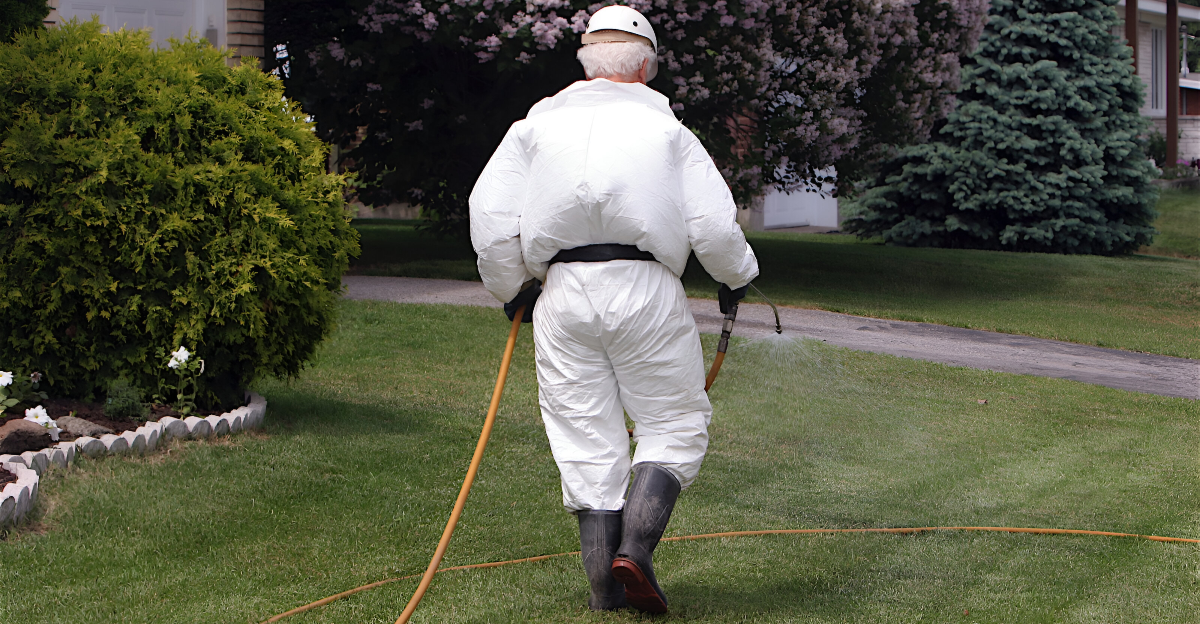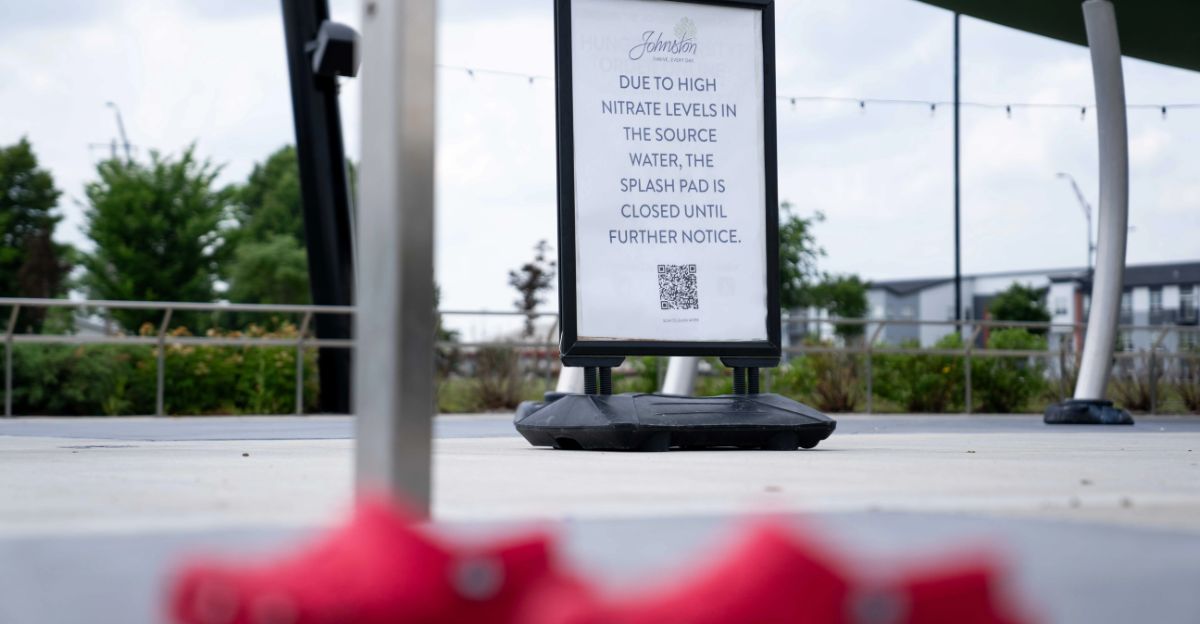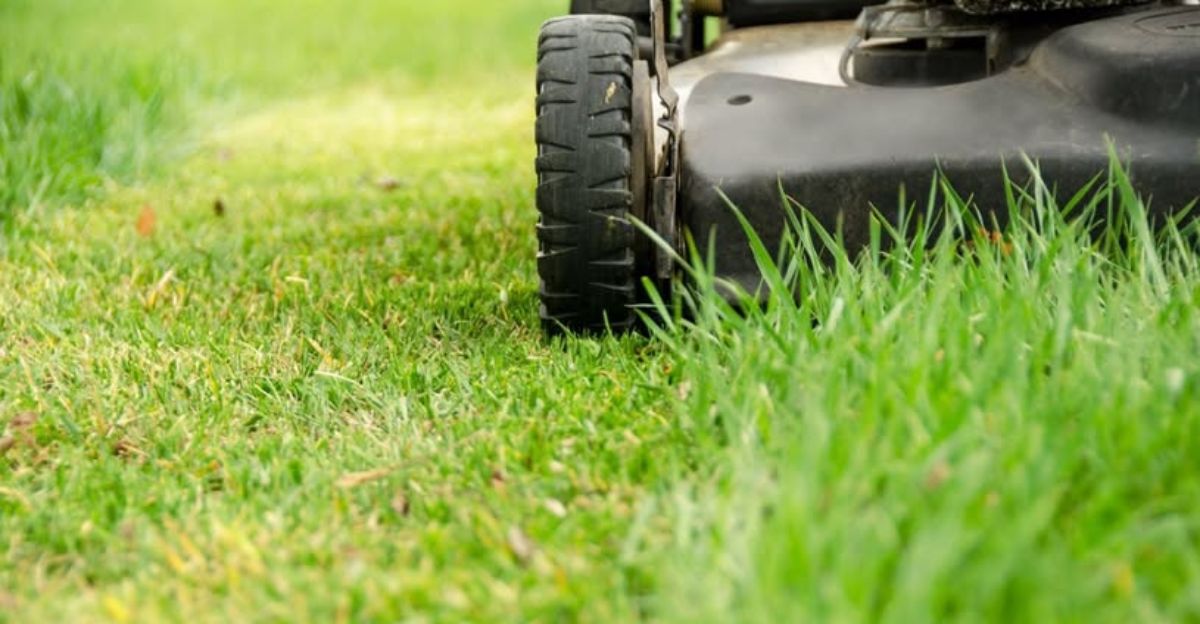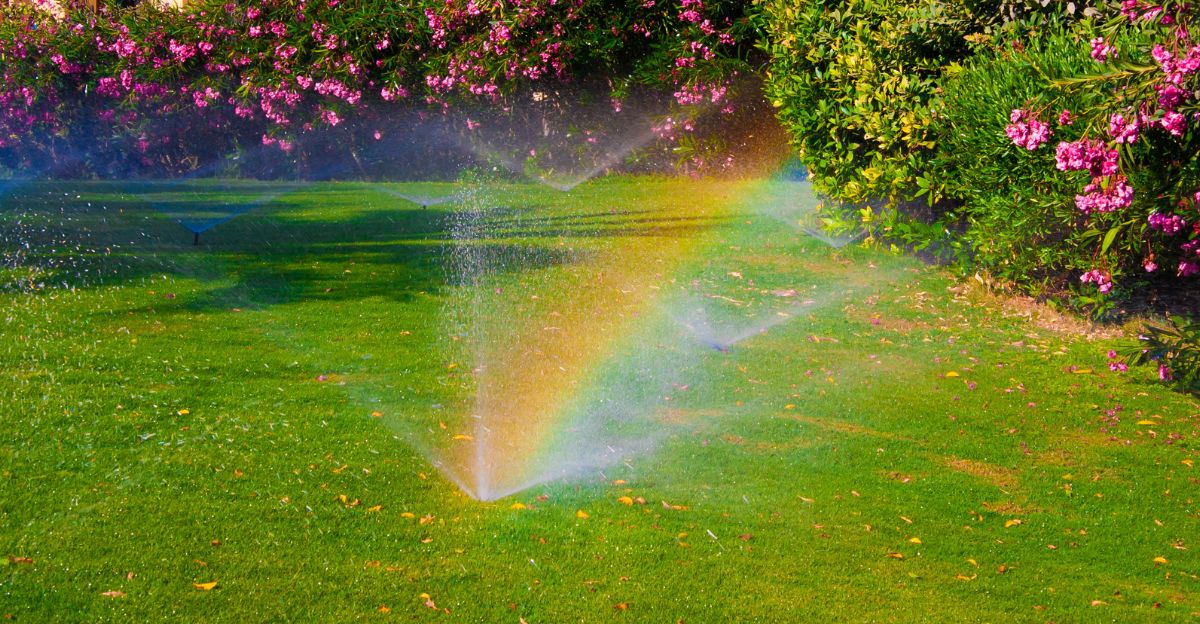
Soaking your lawn is now illegal across metro Des Moines—and not because of drought. The tap water is laced with nitrates at double the federal safety limit, forcing officials to issue the first-ever suburban watering ban in Iowa. The source? Industrial agriculture. Manure runoff, fertilizer overload, and recent rain created a toxic mix that water utilities can’t keep up with. This isn’t just a local inconvenience. It’s a warning shot for the rest of the country.
If Iowa, the epicenter of American farming, can’t protect its drinking water, what does that say about the system? And what happens when brown lawns become more than just a summer eyesore?
Why the Water Crisis Began

Iowa’s nitrate crisis begins on the farm. Over 92% of the nitrates in the state’s water come from agriculture, driven by thousands of factory farms producing 109 billion pounds of manure each year. This waste, combined with fertilizer-heavy practices, creates a perfect storm: during drought, chemicals accumulate in fields, then heavy rains flush them straight into drinking water sources.
Central Iowa Water Works now spends $16,000 per day running nitrate removal systems that still struggle to keep up. Iowa ranks among the top four states for nitrate-linked cancer risks, with contamination levels capable of causing more than 10 cases per 100,000 people annually. In June 2025, the crisis boiled over. A first-ever lawn watering ban hit 600,000 residents, exposing the true cost of unchecked industrial farming.
No More Watering Lawns: Suburbia Hits a Wall

The ban isn’t just about water—it’s unraveling the suburban lifestyle. In Iowa, professional lawn care averages $53 per visit, but lawns are now drying out under strict restrictions. Des Moines Water Works raised rates for heavy users just before the ban, leaving residents stuck paying more for water they can’t use. Lawn watering once made up 40% of summer demand, now it’s off-limits.
Property values are on shaky ground. Poor landscaping can lower home values by up to 30%, while healthy yards can boost them by 12.7%. Beyond aesthetics, the real shock is psychological: water scarcity is exposing just how fragile suburban life really is.
Lawn Care Businesses Are Taking a Major Hit

Iowa’s $1.8 billion landscaping industry is taking a hit. Lawn care companies charging $35 per visit are losing clients fast, with lawns drying out and watering banned. Homeowners are turning to artificial turf, part of a growing market driven by the need for low-maintenance, drought-resistant options.
Golf courses and equipment manufacturers aren’t spared either. Courses face backlash for their heavy water use, while tractor sales have dropped nearly 16% year-over-year. With over 1,700 John Deere layoffs in 2024, the ripple effects are clear. What started as a water crisis is now shaking industries tied to Iowa’s farming way of life.
The Way People Garden—and Shop—is Shifting Fast

Iowans are rethinking how they live. Xeriscaping, landscaping with native, drought-tolerant plants, can cut outdoor water use by up to 60%. Groups like Seed Savers Exchange and Wild Ones are helping residents swap plants and build resilient gardens. The “No Mow” movement is catching on, too. Research shows that mowing less often boosts bee populations and improves early-season foraging.
It’s not just about yards. People are changing how they shop, too, one in three consumers now avoids products that have gone up in price, while many use apps to find better deals. In Iowa, a lifestyle once rooted in abundance is shifting toward sustainability.
How the Crisis Is Disrupting Global Agriculture

Iowa’s water crisis is triggering alarm far beyond state lines. As the top U.S. corn producer and second in soybeans, Iowa feeds both the country and global markets. It also raises a third of America’s hogs. But with water treatment costs soaring, $16,000 per day in Des Moines alone, utilities are straining to keep up, and federal aid may soon be necessary.
Global partners are taking note. The EU’s new Deforestation Regulation could restrict Iowa’s exports due to rising environmental concerns. If the Midwest can’t safeguard its water, questions emerge about whether America’s agricultural model is truly sustainable, or dangerously outdated.
Locals Speak Out as the Water Gets Worse
“I shouldn’t have to pay for pollution I didn’t cause,” says Kim Hagemann of the 48 Lakes Initiative. Stories like hers are everywhere. Only three of Iowa’s 39 state park beaches have avoided E. coli warnings over the past decade. Nick Schutt recalls catching tadpoles as a child in water later found to be contaminated with farm chemicals.
Now, water workers are scrambling. In West Des Moines, irrigation accounts fell from 1,800 to just 150 as bans took hold. These are proof of a community forced to live with the consequences of industrial-scale agriculture and lax regulation.
Political Pressure Is Building to Change the Rules

Iowa’s water crisis is exposing cracks in long-standing political protections for agriculture. Despite years of voluntary cleanup programs like buffers and wetlands, Iowa has made no measurable progress toward its 45% nitrate reduction goal. Meanwhile, the EPA just added seven new water segments to the 2024 national impaired waters list, challenging the state’s own assessments.
Low-income communities are hit hardest, often lacking filtration systems to protect their health. Agricultural lobbyists still resist reforms, but this time is different, suburban homeowners are now feeling the impact. When safe water disappears from the tap, environmental policy stops being abstract and becomes deeply personal.
What You Should Be Doing Right Now

Central Iowa residents: disable sprinkler systems immediately or risk having your water shut off. Consider investing in native plants or xeriscaping to cut future costs. Take photos of your yard’s current condition, some insurance plans may cover landscape losses. Join with neighbors to share drought solutions or bulk-buy turf alternatives.
Outside Iowa? Start looking into your own water utility’s nitrate reports and conservation plans. This crisis could hit your state next. Back legislation that holds polluters accountable for cleanup. And most importantly, vote in local elections where water management policy gets made, Iowa counties have successfully passed water quality bond measures with over 70% voter support.
The Bigger Picture Behind a Brown Lawn

Iowa’s lawn watering ban may seem like a local restriction, but it represents something much larger. For decades, industrial farming has been treated as untouchable, essential, efficient, and immune to criticism.
But now, the consequences are showing up not in abstract policy, but in daily life: brown lawns, sick kids, and rising bills. This isn’t just about grass. It’s about whether communities can protect public resources from private damage. Iowa’s crisis offers a stark choice: keep doubling down on a system that poisons its own people, or build something more sustainable. The greenest lawn isn’t worth it if the water’s no longer safe to drink.
Explore more of our trending stories and hit Follow to keep them coming to your feed!

Don’t miss out on more stories like this! Hit the Follow button at the top of this article to stay updated with the latest news. Share your thoughts in the comments—we’d love to hear from you!







